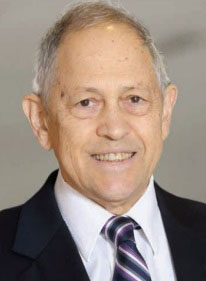Harnessing data to improve the way we measure health and predict mortality
Dr. Arnold Mitnitski is a Dalhousie University Research Professor of Medicine with past cross-appointments in Community Health and Epidemiology, Mathematics, and Computer Science. By analyzing large data samples collected through medical records of elderly and frail patients, Dr. Mitnitski and his colleague Dr. Kenneth Rockwood, a world renowned geriatrician, have developed a measure of human health known as the Frailty Index (FI). The FI has widespread applications in biomedicine by providing physicians with a tool that allows them to distinguish a patient's relative, or "biological age" from their actual, or "chronological age".
Background

Dr. Arnold Mitnitski
As people age their mortality rate increases exponentially, doubling with every 7-8 years of life. Even so, people do not die from old age. Instead, they accumulate age-related illnesses and conditions which make them increasingly vulnerable to various stressors such as falls, injuries, and infections. Frailty is a measure of this vulnerability, and can be tracked by monitoring a broad range of conditions and patient presentations.
Using health data from epidemiological and clinical databases, Dr. Mitnitski and colleagues evaluate individual conditions and assign patients an FI score based on the number of health "deficits" present, divided by the number of conditions being considered. The health deficits evaluated in their studies are broadly defined as signs, (like abnormal blood pressure), symptoms (such as pain or vision problems), illnesses (e.g. diabetes, cancer), functional limitations (difficulties with walking), or abnormal lab results, which all generally become more prevalent with age. The FI score can be calculated from a list of about 40 potential deficits that are readily available. Using this tool, patients are assigned a score that is strongly associated with likelihood of mortality and adverse health outcomes. What researchers have learned is that as a patient's age increases, their FI score provides a more accurate measure of positive or negative outcome than age. This measure may be described as a "biological age indicator" depending on their level of frailty, two patients with the same chronological age, may have widely different treatment options. The FI is used to evaluate the health of patients in intensive care units to predict critical care support, surgical readmission, and nursing home admission among other clinical outcomes. o The FI can be used for monitoring the health of individuals, and to assess how risks can be changed with various treatments. The increasing availability of health related data, like the information contained in electronic medical reports, is allowing researchers such as Dr. Mitnitski and his colleagues to find new ways of assessing and managing health.
Dr. Mitnitski's team continues to improve their modelling by refining the data points and the values of the individual pieces of information collected. A patient's FI score provides a powerful, convenient, and increasingly popular integrative health measure. Still, little was known about why the FI works so well. Drs. Mitnitski and Rockwood, in collaboration with Dr. Andrew Rutenburg from Dalhousie's Department of Physics, have recently developed a theoretical model of health deficits based on complex networks to better understand how changes in health are captured by the FI.
Impact
By mining large samples of health data from the anonymized health records of elderly patients, Dr. Mitnitski has improved the way that physicians can measure frailty in patients. The strong relationship between FI and adverse health conditions and outcomes will allow doctors and other clinicians to provide more accurate assessments and tailored treatment options to patients and their families.
Dr. Mitnitski and his colleagues have pioneered the application of innovative mathematical and computational models to improve our understanding of how health changes with age, which will allow doctors to improve patient care, especially for elderly populations.
Further reading
- Dr. Rockwood's homepage
- Dr. Mitnitski's homepage at Dalhousie
- Dr. Rockwood's Huffpost blog: Should Our Health Care System Be Ageist?
- Date modified: